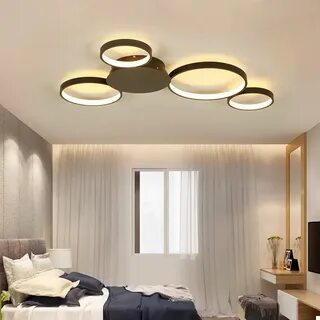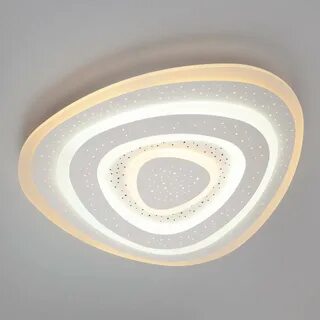
Energy Saving Features
LED light source with high luminance efficiency
Comparison of luminous efficiency: incandescent light efficiency is 10-15lm, tungsten halogen light efficiency is 12-24 lumens/watt, fluorescent light 50-90 lumens/watt, sodium light 90-140 lumen/watt, most of the power consumption becomes heat loss.
LED light efficiency: It can emit 50-200 lumens/watt, and its light emission has good monochromaticity and narrow spectrum. It can directly emit colored visible light without filtering.
2.LED light source consumes less power
Single LED tube power ranges from 0.03-0.06 Watts when driven by DC. The single tube voltage is between 1.5-3.5 Volts. Current 15-18 mA has a fast response speed and can be operated at high frequency. The power consumption of LEDs is one tenth that of incandescent tubes and fluorescent lamps when used for the same lighting effects. In Japan, it’s estimated that LEDs are twice as energy-efficient as fluorescent bulbs, and can replace up to half of the incandescent lamps in Japan. This would save 6 billion liters crude oil each year. The power of a fluorescent lamp that has the same effect as an LED is 18 watts. .
LED light source is long-lasting.
Incandescent lamps, fluorescent lamps, and tungsten halogen lamps use electronic light field radiation to emit light. The filament emits light and is prone to burning, heat deposition, and light attenuation. LED lamps are small, lightweight, and encapsulated with epoxy resin. They can withstand high strength mechanical impact.
4.Strong safety and reliability
It is safe to touch and has a low calorific value. It can control the angle and pattern of light with accuracy.
5.LED light source is beneficial to environmental protection
LEDs are solid-state lights that emit light. They are impact-resistant, recyclable, have no pollution and reduce the production of harmful gases like sulfur dioxide and nitrides. It can be called a “green lighting source.”

There are currently three technologies for producing white LEDs: one, which uses the principle of three primary colors and the three ultra-high brightness LEDs of red, green, and blue that can be produced to mix the light intensity in a ratio of 3:1:6 to produce white; the other, which uses ultra-high-brightness LEDs Highly InGan blue LED, with a small amount of yttrium-diamond-granite-based phosphor added to the tube, it can produce yellow-green light under blue light excitation, and this yellow-green light can be combined with the transmitted blue light to synthesize white light. All three are incompatible to ultraviolet light. Light LED uses ultraviolet light to excite three primary color phosphors or other phosphors to produce white light mixed with multiple colors.
6.LED light source is more energy-saving
Of course, energy saving is the main reason why we consider using LEDs. LEDs may be more expensive than traditional light sources, but using energy savings in one year to recoup the investment in light sources will lead to a net payback period of several times the annual energy savings in 4 to 9 years.
life of lights
The best way to drive leds is with constant current sources. Using constant current source driving, there is no need to connect a current limiting resistor in series with the output circuit. The LED current is not affected externally by changes in voltage, temperature, or LED parameters. The LED current is kept constant, allowing the many excellent features of the LED to be fully utilized.
An LED constant current power supply is used to power LED lamps. The LED current is detected and controlled automatically during the operation of the power source, so there is no worry about an excessive current flow through the lamp at the time of powering on or a short circuit. Power supply failure.
Lamp housing
LED lights have the characteristics of high efficiency, environmental protection and long life. People who use LED lights often will notice that LEDs can be very hot because they are so bright. At this time, if the LED cannot dissipate heat as quickly as possible, its lifespan will be greatly reduced.
Many LED manufacturers use aluminum casings for LED lamps. Aluminum casings are easy to dissipate heat, have beautiful appearance and are lightweight. Aluminum casings are used in many high-end electronics. For example, the company’s high-end notebook computer series “Mac Pro” uses an all-aluminum casing to facilitate notebook computer heat dissipation, so that the computer does not even need a fan.
Aluminum shells can extend the life of the LED wick, and also make it look more beautiful. However, the aluminum lamp cup is relatively expensive and the production cost is very high. The lamp cup must be turned on a lathe. Some LED lights of high and medium quality will have aluminum housings.
Another common LED lamp housing is a plastic housing. Since the cost of plastic shells is very low, some low-end LED lamps will use plastic shells. However, plastic shells are not easy to dissipate heat, and plastics tend to melt and sublimate when heated to produce harmful gases. Therefore, Europe, North America, and Japan do not use plastic casings. Plastic casings are popular in certain areas of the country due to the high demand for LED lights.
Household lamp

LEDs can be used to replace spiral light bulbs or energy-saving lights, with wattages ranging from 5-40 Watts. Some lamps are able to replace even higher-power bulbs as of 2010. A 13-watt bulb, for example, has the same brightness of a 100-watt lamp. Incandescent bulbs have an efficiency of 14-17 lumens/watt depending on the size and voltage. According to EU standards, an “energy-saving light bulb” equivalent to a 60-watt incandescent lamp requires at least Can output 806 lumens.)
The majority of LED bulbs are non-dimmable. However, some have dimmers that can be used and have a narrower illumination angle. Since 2010, the price of these light bulbs has dropped from $30 to $50. LED bulbs are more energy efficient than energy-saving light bulbs, and can last up to 30,000 hrs if the heat is properly dissipated. Energy-saving bulbs have a life expectancy of about 8,000 to 9,000 hours. Incandescent light bulbs have a lifetime of around 1,000 hours. Therefore, LED bulbs can be used for about 25 to 30 years, and the brightness decreases very little over time. The Energy Star standard stipulates that after a light bulb is used for 6,000 hours, the luminosity attenuation should be within 10%, and the worst case should not exceed 15%. LED bulbs do not contain mercury, unlike fluorescent lamps. LED bulbs also come in different color options. The higher price of LED bulbs is offset by the lower cost of electricity and maintenance.
Special Purpose
White LED bulbs are highly efficient and have a leading position in low-power consumption markets (such as flashlights, solar garden lights, pedestrian street lights, bicycle lights, etc.). Traffic lights and holiday lighting are frequently made with single-color LEDs.
LED lights were a popular topic in 2010 for horticulture, agriculture and other related circles. NASA was the first to use LED lights in space for indoor gardening. These special planting lights are specially designed so that the light waves are exactly the wavelengths absorbed by chlorophyll. It not only encourages growth but also reduces the light waves which are not absorbed and cause waste. These lights were designed to take into account both red and blue, as only these two colors are required for photosynthesis in the visible spectrum. Compared with similar products, these LED lights can provide the same luminosity, do not require a ballast, and generate much less heat than gas discharge lamps, making them very suitable for indoor cultivation. Less heat can reduce evapotranspiration, thereby reducing the number of fillings. Plants should not be watered too much when using these lights.
Buying guide
- Choose LED lights with the “Three Guarantees” commitment and choose lamps with the CCC certification mark;
- The LED lamp productlabels must be complete. Labels should be placed on all products.
- The CCC mark is a safety certification that you can look for on the LED power cord.
- Check whether the live parts of the lamp are exposed. The metal lamp holder should not be touched by fingers after the light source has been installed.
- Check if the LED chip is in the correct position, and if the lens or screen has worn out.
Damage caused
- The voltage of the current is unstable. An increase in the power supply voltage is particularly likely to cause damage to the LED lamp. There are many reasons for a sudden increase in voltage, such as quality problems with the power supply or improper use by the user. The power supply voltage may suddenly increase. high.
- This is caused by a short circuit in the power supply of the lamp. This is usually caused by a component in the circuit or a short-circuit in other wires that increases the voltage in this place.
- The LED may be damaged by its own quality, causing a short-circuit. This voltage drop then spreads to the other LEDs.
- The lamp’s heat dissipation is bad. We all know that the lighting of the lamp is a heat dissipation process. The characteristics of LEDs will easily degrade if the temperature in the lamp is high. This can also easily cause damage to the LED lights.
- Water is conductive and will cause the lamp to short-circuit.
- Failure to do anti-static work during assembly has resulted in the interior of the LED being damaged by static electricity. It is easy to damage the LED even if voltage and current are normal.
The common causes of LED flickering and their solutions
Normaly, the human eye is able to detect flickering light up to a frequency 70 Hz. However, it cannot detect frequencies above this. In LED lighting applications, If the pulse signal contains a low frequency component, with a lower frequency than 70 Hz the human eye can feel flicker. There are several factors that can cause LED lights flicker in certain applications.
For example, in offline low-power LED lighting applications, a common power supply topology is an isolated flyback topology.
The flyback regulator’s sinusoidal square-wave power conversion does not supply constant energy to primary bias. This can cause the dynamic self-power (DSS)) circuit to activate, causing the light to flicker.
To avoid this problem, the primary bias must be allowed to partially discharge during each half-cycle. Correspondingly, the values of the capacitors and resistors that make up the bias circuit need to be chosen appropriately.
Even LED drivers with excellent power factor correction that support TRIAC dimming require electromagnetic interference (EMI).
The TRIAC step causes a transient current that will cause the inductor to resonate and the capacitor to resonant in the EMI filter.
The TRIAC will shut off if this resonant feature causes the input current drop below the TRIAC hold current. After a brief delay, the TRIAC will usually turn on again and stimulate the same resonance.
The LEDs will flash if this sequence of events occurs multiple times in a half-cycle of the input waveform. In order to solve this problem, a requirement for TRIAC dimming would be that the input capacitance is very low. This capacitance must also be decoupled from the winding impedance by the TRIAC.
According to the formula, if the capacitance in the dimming module is reduced, the resistance of the resonant circuit can be increased, which in principle suppresses oscillation and restores the desired circuit operation.



